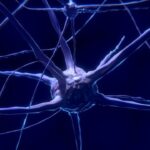Table of Contents
Human disease awareness
Human disease awareness is crucial for promoting public health and preventing the spread of illnesses. By understanding the causes, symptoms, and prevention methods of various diseases, individuals can take proactive steps to protect themselves and their communities. Awareness campaigns play a vital role in educating people about common diseases such as influenza, diabetes, and heart disease.

These initiatives often involve collaboration between healthcare professionals, government agencies, and non-profit organizations to disseminate accurate information through workshops, social media platforms, and community events. Ultimately, increasing human disease awareness empowers individuals to make informed health decisions and fosters a healthier society overall.
Reasons for diseases
Biological diseases are diseases that are spread by living organisms. These are also known as vector-borne diseases.
The disease is transmitted to humans through a variety of ways. One of these life cycles. Partially, it occurs in these small organisms. Organisms that carry germs are called vectors.
Until recently, insect-borne diseases such as malaria, plague, and typhus fever were the main causes of disease and death. Although many diseases have been controlled to date, their effects have not been completely reduced. Apart from this, the effects of elephantiasis are also not hidden.
Malaria
Malaria, which was thought to have disappeared, seems to have re-emerged.

Malaria is one of the most common mosquito-borne diseases. It is a protozoan disease. This organism is called plasmodium. There are four types of plasmodium. All four cause different types of malaria. The disease is transmitted by the female anopheles mosquito. The disease was discovered by Sir Ronald Ross. When a patient with malaria is bitten, the female anopheles mosquito absorbs the pathogen along with his blood. Germs grow and reproduce inside the mosquito’s body. After spending seven to ten days in the mosquito’s body, when the mosquito bites another person, malaria germs are injected into the mosquito’s body.
The germs that enter the human body thus spend the rest of their life cycle growing there as well.
These bacteria cause damage to the blood vessels. Therefore. There is anemia and splenic enlargement.
The best way to control malaria is to kill mosquitoes. DDT can be used to kill mosquitoes and mosquitoes. This method was used a few years ago. Now it seems that many mosquitoes have become resistant to the drug DDT. So they live in violation of DDT. Also, it is known that DDT pollutes the environment. Its use has been reduced.
When mosquitoes come in contact with DDT, they die within two to three days. A mosquito that has developed resistance. The tail can continue to live after being hit by DDT.
To prevent mosquitoes from multiplying, it is necessary to keep the reservoirs clean, to prevent the accumulation of sewage, and to prevent the collection of garbage.
The Malaria Control Programme at the national level is being implemented to eradicate malaria in many ways. Anyone with a fever should contact their doctor immediately if they or their family members have the flu. It is very important to determine what a fever is. elephantiasis (filariasis)
Another mosquito-borne disease, like malaria, is elephant foot disease. It causes swelling in many parts of the body, especially the feet and ankles. The disease is called filariasis (elephantiasis) and is caused by the swelling of the elephant’s feet.
The disease is caused by a parasite of the genus Thymus (Thymus). There are many kinds of them. In India, Wuchereria bancrofti and Wuchereria malayi are responsible for elephant foot disease.
Culex (Yi) mosquitoes transmit filariasis.
At the beginning of the disease, the patient has a fever. Inflammation of the lymphatic system. Rarea worms seek out lymphatic vessels and lymphocytes (1R5) of the lymphatic system. So, lymphadenitis appears. As this continues, the flow of lymph in the lymphatic system is disrupted, and the lymph in the intercellular space is destroyed. Absorption is also affected, which leads to swelling by leaking: Inflammation of the filament is also caused by these worms. Although the disease is not as dangerous as death, it can cause discomfort, disorientation, pain in the affected area, and disorientation.
ochrearia
Full-grown worms, male worms, and female worms live in the lymph nodes. These species multiply and give rise to young worms called microfilaria. These young live in the blood. If the patient is bitten by a mosquito while these are in the blood, then young worms from his blood enter the body of the kerzu. In ten to twenty days, the worms grow well, become infected, and begin to live in the mosquito’s mouth area. When this mosquito bites a person who is not sick, the young worms that accumulate on his skin slowly penetrate and form lymph vessels. There they grow into adults and become full-fledged worms. That’s how life goes on.
It is not possible to control the disease. There is no other way but to use surgical methods to avoid further complications to the inflamed areas. Medicines are also invented and used to prevent the disease from getting worse and infecting others.
It is also difficult to control the Culex mosquito. They are not susceptible to insect pests such as DDT. So, we have to deal with wastewater control, disposal of effluents, treatment of reservoirs, and so on.
Plague
It was once the most feared disease in the world. Today, although restricted in many parts of the world, it is still found in some places.
It is spread by mosquitoes. The disease does not usually affect humans. Rat fleas can spread from rat to rat. But when a rat dies, the droppings from the dead rat’s body can bite nearby humans and inject the pathogen, rhapasturella pestis, into their bodies. They are immediately afflicted by the plague known as the “Black Death.”

The initial symptoms are fever and chills.
As the disease spreads, many people become infected.
The best control methods are keeping the house clean, avoiding rodents, and keeping the surroundings clean.
Health preservation
Health preservation is an essential aspect of maintaining overall well-being and quality of life. It involves a proactive approach to managing one’s physical, mental, and emotional health through various means such as regular exercise, a balanced diet, adequate sleep, and stress management techniques.
By prioritizing health preservation, individuals can reduce the risk of chronic diseases, enhance their immune system’s functionality, and improve their ability to cope with daily challenges. Additionally, staying informed about health-related topics and seeking regular medical check-ups are crucial components of effective health preservation strategies. Ultimately, investing in one’s health today can lead to a more fulfilling and vibrant life in the future.
Disease knowledge benefits
Disease knowledge benefits individuals by empowering them with the information needed to make informed health decisions. Understanding diseases, their causes, symptoms, and treatments can lead to better prevention strategies and early detection. This knowledge also fosters a sense of control over one’s health journey and encourages proactive management of potential health issues. Moreover, it enhances communication with healthcare providers, enabling more effective discussions about treatment options and outcomes. Overall, disease knowledge is a crucial component in promoting healthier lifestyles and improving public health outcomes.
Peoples Frequently asked questions
What are some key strategies humans use to overcome diseases?
Humans have developed a multitude of strategies over the centuries to combat diseases. From ancient herbal remedies to cutting-edge medical technology, the evolution of medicine showcases human ingenuity and resilience. Vaccinations, antibiotics, and advanced surgical techniques have played pivotal roles in eradicating or controlling many diseases that once decimated populations.
How important is lifestyle in minimizing disease risks?
Lifestyle choices are crucial in minimizing the risks associated with numerous diseases. Regular physical activity, a balanced diet rich in nutrients, and adequate sleep contribute significantly to maintaining overall health. Avoiding harmful habits like smoking and excessive alcohol consumption further reduces the risk of developing chronic conditions such as heart disease and diabetes.
What role does early detection play in overcoming diseases?
Early detection can be lifesaving when it comes to managing diseases. Regular health check-ups and screenings allow for early identification of potential health issues, enabling more effective treatment options. Early intervention often results in better outcomes, less invasive treatment methods, and an overall increase in survival rates.
How has technology contributed to overcoming diseases?
Technology has revolutionized how we approach disease prevention, diagnosis, and treatment. Innovations such as telemedicine have made healthcare more accessible than ever before. Additionally, advancements like genetic testing provide personalized insights into individual health risks, aiding doctors in crafting precise treatment plans tailored to each patient’s unique needs.
These efforts underscore humanity’s relentless quest for healthier lives while highlighting our capacity for innovation and adaptation amidst challenges. Through continued collaboration between researchers, healthcare professionals, and individuals committed to healthy lifestyles, we can look forward with optimism as we strive together towards a future where fewer people suffer from preventable conditions.




